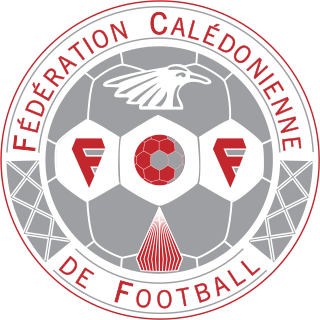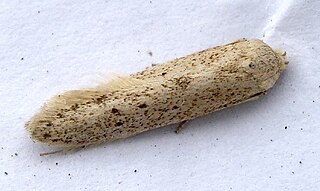
New Caledonia is a sui generis collectivity of overseas France in the southwest Pacific Ocean, south of Vanuatu, about 1,210 km (750 mi) east of Australia, and 17,000 km (11,000 mi) from Metropolitan France. The archipelago, part of the Melanesia subregion, includes the main island of Grande Terre, the Loyalty Islands, the Chesterfield Islands, the Belep archipelago, the Isle of Pines, and a few remote islets. The Chesterfield Islands are in the Coral Sea. French people, especially locals, call Grande Terre "Le Caillou".

Caledonia is a village in Racine County, Wisconsin, United States. The population was 25,361 at the 2020 census. The residential community of Franksville is located within the village. Franksville is a former census-designated place. The residential neighborhood of Husher is also located within the village.

The CFP franc is the currency used in the French overseas collectivities of French Polynesia, New Caledonia, and Wallis and Futuna. The initials CFP originally stood for colonies françaises du Pacifique but since 2022 is officially Collectivités françaises du Pacifique. Its ISO 4217 currency code is XPF. The CFP franc is subdivided into 100 centimes, although there are no centime denominations. The currency is issued by Institut d'émission d'outre-mer (IEOM).

Araucaria is a genus of evergreen coniferous trees in the family Araucariaceae. While today they are largely confined to the Southern Hemisphere, during the Jurassic and Cretaceous they were distributed globally. There are 20 extant species in New Caledonia, Norfolk Island, eastern Australia, New Guinea, Argentina, Brazil and Chile.

Nouméa is the capital and largest city of the French special collectivity of New Caledonia and is also the largest francophone city in Oceania. It is situated on a peninsula in the south of New Caledonia's main island, Grande Terre, and is home to the majority of the island's European, Polynesian, Indonesian, and Vietnamese populations, as well as many Melanesians, Ni-Vanuatu and Kanaks who work in one of the South Pacific's most industrialised cities. The city lies on a protected deepwater harbour that serves as the chief port for New Caledonia.

The New Caledonia men's national football team is the national team of New Caledonia and is controlled by the Fédération Calédonienne de Football. Although they were only admitted to FIFA in 2004, they have been participating in the OFC Nations Cup since its inception. They have been one of this relatively small region's strongest teams, finishing second in 2008 and 2012, and third in 1973 and 1980. They were the top ranked OFC nation at number 95 in September 2008, making them only the fourth country from the confederation to have reached the global top 100.

Caledonia was the Latin name used by the Roman Empire to refer to the part of Great Britain that lies north of the River Forth, which includes most of the land area of Scotland. Today, it is used as a romantic or poetic name for all of Scotland. During the Roman Empire's occupation of Scotland, the area they called Caledonia was physically separated from the rest of the island by the Antonine Wall. The Romans several times invaded and occupied it, but unlike the rest of the island, it remained outside the administration of Roman Britain.

Barychelidae, also known as brushed trapdoor spiders, is a spider family with about 300 species in 39 genera.

The Blastobasidae are a family of moths in the superfamily Gelechioidea. Its species can be found almost anywhere in the world, though in some places they are not native but introduced by humans. In some arrangements, these moths are included in the case-bearer family (Coleophoridae) as subfamily Blastobasinae. The Symmocidae are sometimes included in the Blastobasidae as subfamily or tribe.

Blastobasis is the type genus of the gelechioid moth family Blastobasidae; in some arrangements these are placed in the case-bearer family (Coleophoridae) as a subfamily. Within the Blastobasidae, the subfamily Blastobasinae has been established to distinguish the Blastobasis lineage from the group around Holcocera, but the delimitation is not yet well-resolved.
Blastobasis anthoptera is a moth of the family Blastobasidae. It is found in Australia and New Guinea.
Blastobasis dicionis is a moth in the family Blastobasidae. It is found in Costa Rica. Its forewings are 5–7 mm long and are brownish-grey intermixed with brownish-grey scales tipped with pale brownish-grey and pale brownish-grey scales. The hindwings are translucent pale brown, gradually darkening towards the apex.
Blastobasis millicentae is a moth in the family Blastobasidae. It is found in south-eastern Kenya and South Africa. The habitat consists of coastal lowlands.
Blastobasis acirfa is a moth in the family Blastobasidae. It is found in Kenya. The habitat consists of coastal lowlands and the western highlands.
Blastobasis egens is a moth in the family Blastobasidae. It is found in South Africa and the Democratic Republic of the Congo.
Blastobasis determinata is a moth in the family Blastobasidae. It is found in South Africa.
Blastobasis moffetti is a moth in the family Blastobasidae that is endemic to New Caledonia.
Blastobasis christou is a moth in the family Blastobasidae that is endemic to New Caledonia.
Blastobasis orladelaneae is a moth in the family Blastobasidae that is endemic to New Caledonia.
Blastobasis lososi is a moth in the family Blastobasidae that is endemic to Fiji.









